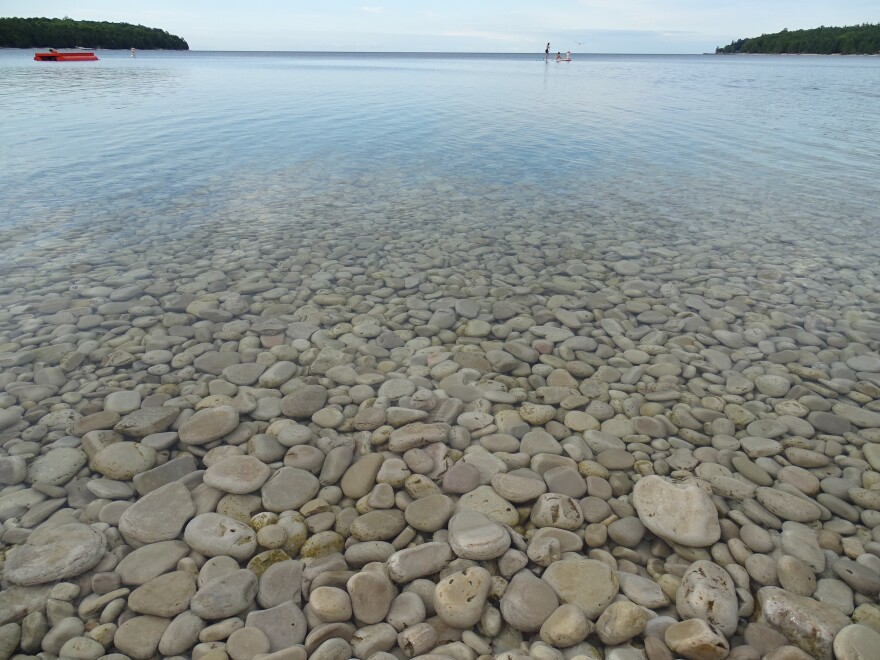It was a late summer’s Sunday afternoon when I stepped onto Schoolhouse Beach along the northwest coast of Door County’s Washington Island.
The beach is nestled at the base of a protected harbor — the island’s original fishing port I’m told. Vessels have long since given way to children testing the water, while teens try to achieve the perfect cannonball off the bright orange raft.

But it’s the stones that are most captivating — white and smooth as silk. They blanket the beach and stretch into the water as far as the eye can see.
"You won’t get any of that annoying sand because it’s all rock — it’s all rounded bright white rocks rounded by the waves — beautiful," Jim Rose says.
He moved to Washington Island in 1977. "I probably didn’t come to the beach until, I don’t know, the next summer," he says.
Rose came to Washington Island for his first teaching job and never left. He taught high school math and science over his 35-year career.
"When we first moved here, I thought like, 'Oh what a dinky place, I’ll get some experience on my resume and then it’ll be onward and upwards — something bigger and better.’ But by the time that happened, we fell in love with the place and here we are," Rose says.
Schoolhouse Beach has a lot to do with that decades-long love story.
"There are cliffs on the edges here that the waves break rocks off and they roll ‘em in and by the time they get here they’re rounded ... they’re dolomitic limestone if you really want to know," Rose says.
Washington Island falls within the Niagara Escarpment. It’s a massive 650-mile-long bedrock ridge that sweeps from eastern Wisconsin, through the Upper Peninsula, into southern Ontario, ending in western New York near Niagara Falls.
The geological phenomenon was millions of years in the making.
What we see today are the remnants of marine sediment deposited along an ancient sea. That includes nearby Boyer Bluff — the source of Schoolhouse Beach’s stones. The massive cliff rises 140 feet above water.
Over time, wind, water and the cycle of seasons chip away at the massive cliff, occasionally sending huge chunks of limestone into the waters below. Over the centuries, chunks break down until eventually one stone polishes the other before settling at Schoolhouse Beach.

"They say that there’s only like four or five beaches in the entire world that are similar to this one," Rose says.
That’s why Washington Island asks visitors to enjoy the stones where they belong, not take them home.
"People would come down here with a truck and would load up a truckload and then go home and build like a fireplace or something like that and that would deplete them in a hurry. Tourists take one or two here or there, but still, every one counts," Rose says.
Rose says if you come to Schoolhouse Beach in the middle of a summer's day, "There are times where you have to zig and zag your way from the parking area to the water because there’s just so many people — it’s incredible the number of people that come here," he says.
But this is the quiet time of day at Schoolhouse Beach.
Rose says he might not be as fast as he used to be, but he’ll take his daily dip including a dive off the raft through mid-September and pick up again next June.
Rose takes the plunge.
I ask, "How does it feel?"
Rose responds simply, "It’s nice."
That’s all the encouragement I need to test the water for myself.








